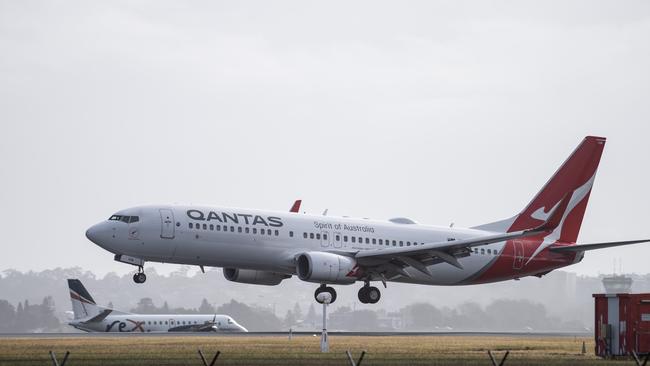Budget 2021: Outlook for the nation built on closed border view
Australia’s borders are likely to remain closed until well into next year, with the vaccine rollout to take longer than expected.

Australia’s borders are likely to remain closed until well into next year, with only a small number of international students to arrive this year and the vaccine rollout to take longer than expected.
Key assumption underpinning Treasury forecasts warn the timeline could be “substantially different” from the final outcomes as the pandemic rages overseas, sending the country into its first closed-border election by next year. Treasury also concedes that the full delivery of vaccines is now only “likely” to be finished by December, in contrast with assumptions in last year’s October budget which forecast immunisation to be “fully in place by late 2021”.
Much of that change reflects set backs in the program since the start of the year, including the emergence of a rare blood-clotting risk linked to the AstraZeneca vaccine which led the government to limit it to those aged above 50.
The budget assumes that any localised outbreaks of COVID-19 will be “effectively contained” and that social-distancing requirements, which hinder consumer and business activity, will remain in place until lifted on the basis of medical advice. Inbound and outbound overseas travel is assumed to remain at low levels through to at least the middle of 2022, after which international tourism is expected to experience a “gradual recovery”. “A gradual return of temporary and permanent migrants is assumed to occur from mid-2022. Small phased programs for international students will commence in late 2021 and gradually increase from 2022,” the budget papers say.
“The rate of international arrivals will continue to be constrained by state and territory quarantine caps over 2021 and the first half of 2022, with the exception of passengers from safe travel zones.”
The government is working on a revamp of its skilled migration program to coincide with the end of the vaccine rollout, and is expected to expand the trans-Tasman travel bubble to South Pacific nations and Singapore.
Scott Morrison embraced a cautious approach to the reopening of the international borders leading into the budget, declaring over the weekend that “we sit here as an island that’s living like few countries in the world”.
“We have to be careful not to exchange that way of life for what everyone else has,” he said. “All I know is once you let it back in … you cannot get it out. You’ve crossed that threshold.”
With more than 2.5 million vaccines administered as of this week, Treasury said it assumed a population-wide vaccination program would be effectively rolled out by December, and defended progress made so far.
“The first phase of Australia’s vaccination program, our COVID-19 Vaccine and Treatment Strategy, commenced in late February 2021, with most priority populations having been vaccinated,” it said.
Ahead of the next election, which isn’t due until next May but could be called at the back-end of the year, Treasury did not rule out state governments shutting their borders.
“It is assumed that there are no extended or sustained state border restrictions in place over the forecast period,” the budget papers say. “While most domestic activity restrictions have been lifted, it is assumed that general social-distancing restrictions and hygiene practices will continue until medical advice recommends removing them.
“The lifting of domestic activity restrictions will help support consumer and business activity.”
The budget says net overseas migration will continue to be “significantly affected by international travel restrictions and weaker labour markets globally”.
“It is forecast to fall from around 194,000 persons in 2019-20 to be around -97,000 persons by the end of 2020-21, and then to -77,000 in 2021-22 before increasing to 235,000 persons in 2024-25.
“More broadly, the weak outlook for population growth in the near term as a result of border closures will also weigh on the outlook for real GDP growth.”
The October budget assumed net overseas migration would fall from 154,000 in 2019-20 to around -72,000 by the end of 2020-21, before gradually increasing to around 201,000 in 2023-24.
In the 2021-22 budget, Treasury assumes that continued growth in household consumption will begin moderating “as the recovery stabilises”. “As the international border reopens, net exports are also expected to weigh on growth, with outbound tourism activity more than offsetting that of inbound tourists. In addition, demand for imported goods is expected to increase.
“However, the gradual arrival of international students and migrants over 2022 will support economic growth, particularly for education services exports and consumption.”







To join the conversation, please log in. Don't have an account? Register
Join the conversation, you are commenting as Logout